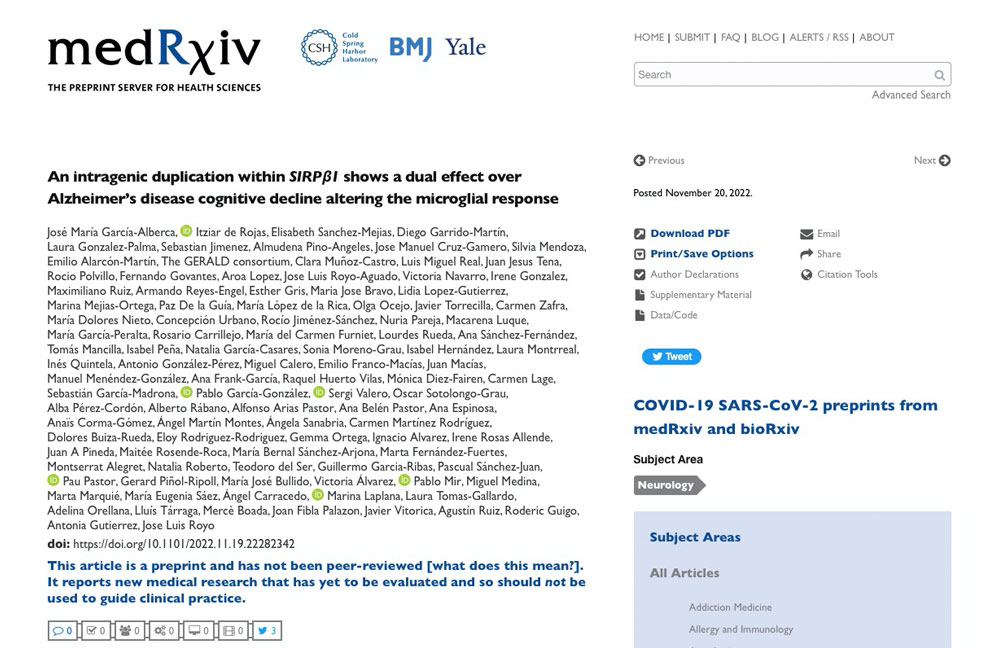SIRPβ1, microglial response and cognitive decline in Alzheimer´s disease
An intragenic duplication within SIRPβ1 shows a dual effect over Alzheimer’s disease cognitive decline altering the microglial response.
Microglia play an important role in the maintenance of brain homeostasis, and microglial dysfunction plays a causative role in Alzheimer disease pathogenesis. Here we focus on the signal regulatory protein SIRPb1, a surface receptor expressed on the myeloid cells that triggers amyloid-b and cell debris phagocytosis via TYROBP.
We found that a common intragenic duplication alters the SIRPb1 protein isoform landscape affecting both extracellular and transmembrane domains, which compromise their ability to bind oligomeric Ab and their affinity for TYROBP. Epidemiological studies show that patients with mild cognitive impairment that are homozygous for the SIRPb1 duplication allele show an increased cerebrospinal fluid t-Tau/Ab ratio (p-value=0.018) and a higher risk to develop AD (OR=1.678, p-value=0.018). Magnetic resonance imaging at diagnosis showed that AD patients with the duplication allele exhibited a worse initial response to the disease. At the moment of diagnosis all patients showed equivalent Mini-Mental State Examination scores. However AD patients with the duplication allele had less hippocampal degeneration (Beta= -0.62, p-value < 0.001) and fewer white matter hyperintensities. In contrast, longitudinal studies indicate that patients bearing the duplication allele show a slower cognitive decline after correcting by baseline (p-value = 0.013). Transcriptional analysis of the patients’ hippocampus also shows that the SIRPb1 duplication allele correlates with higher TREM2 expression and an increased microglial activation.
Given the recent pharmacological approaches focused on the TREM2-TYROBP axis, we consider that the presence of this structural variant might be considered as a potential modulator of this causative pathway.
https://www.medrxiv.org/content/10.1101/2022.11.19.22282342v1

